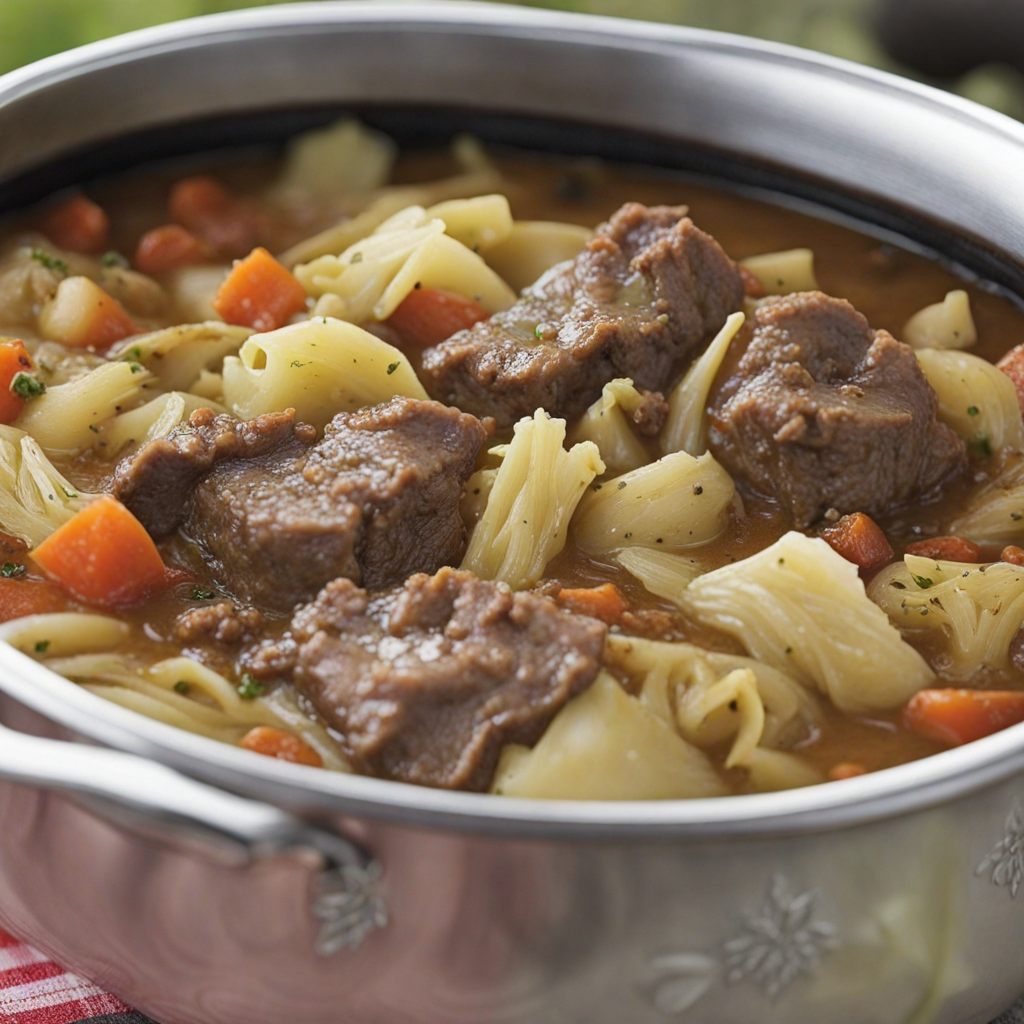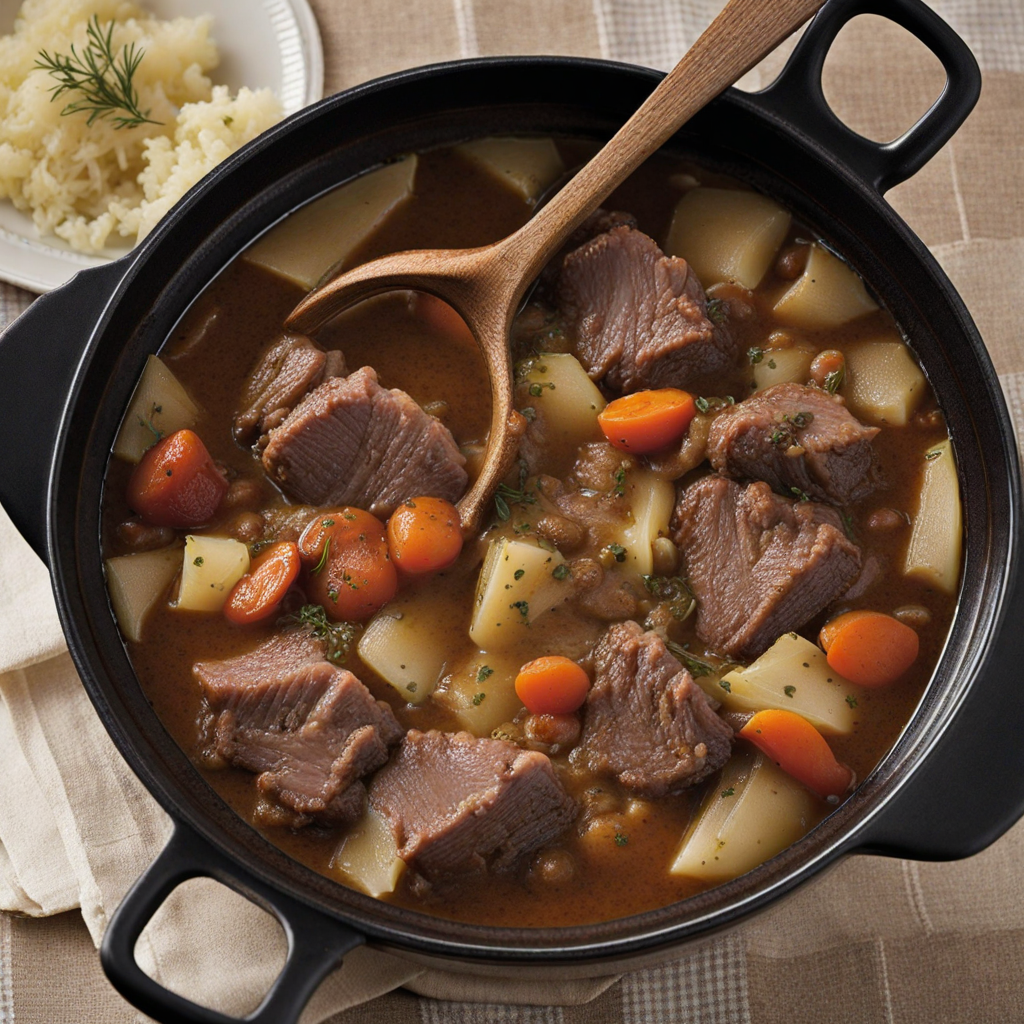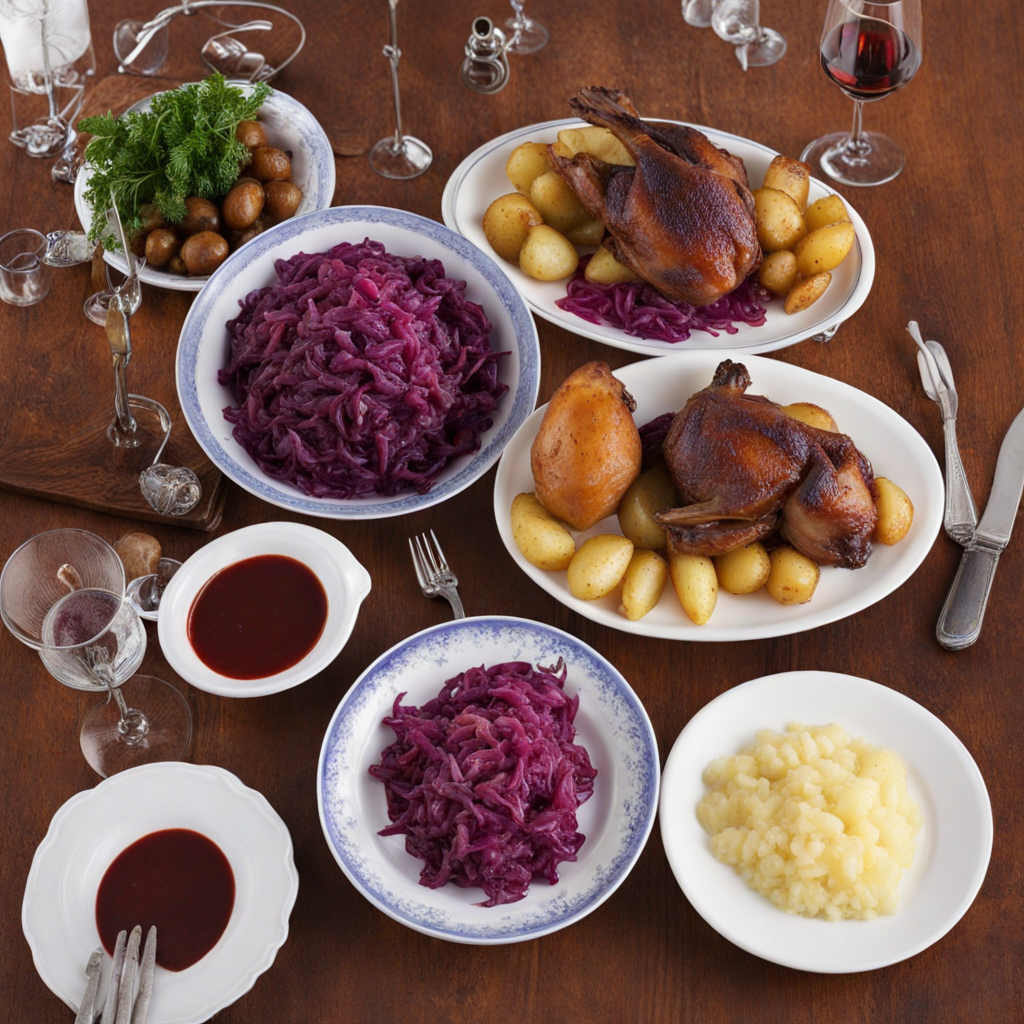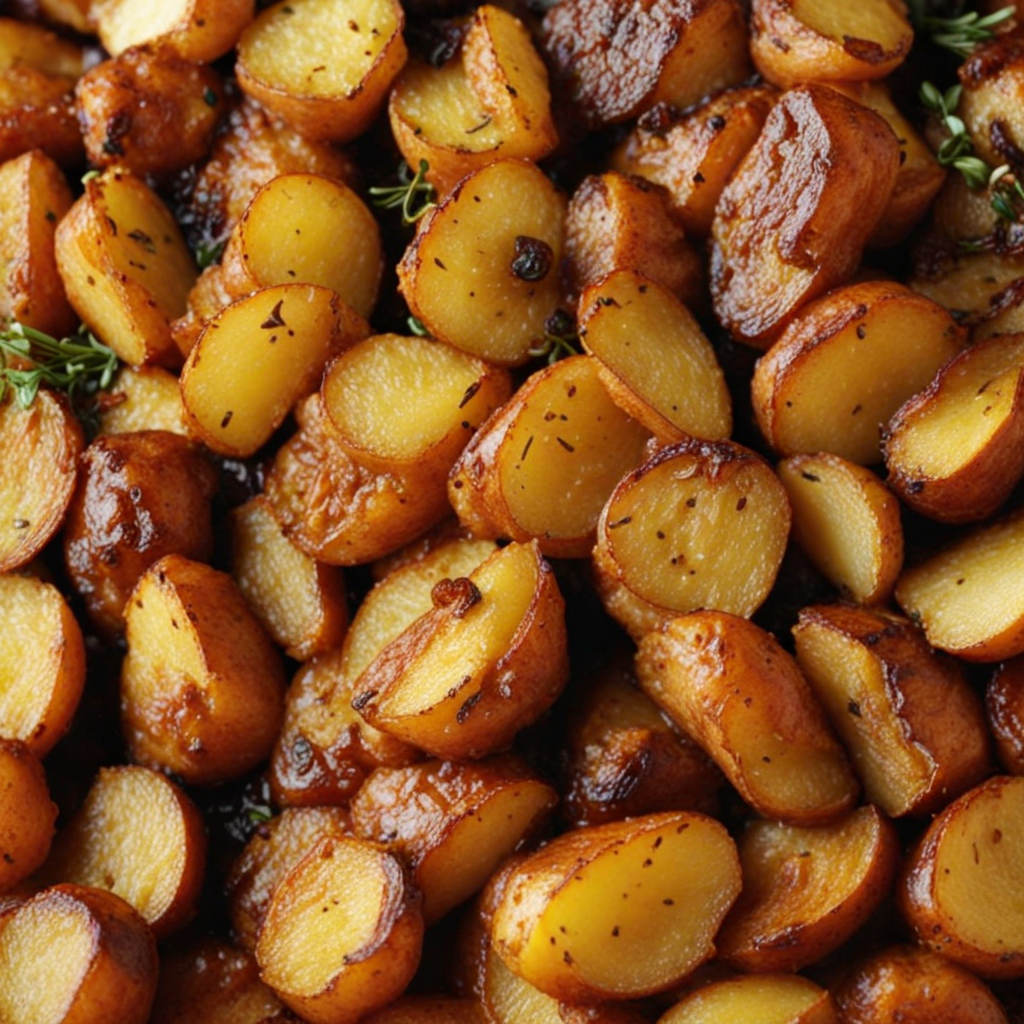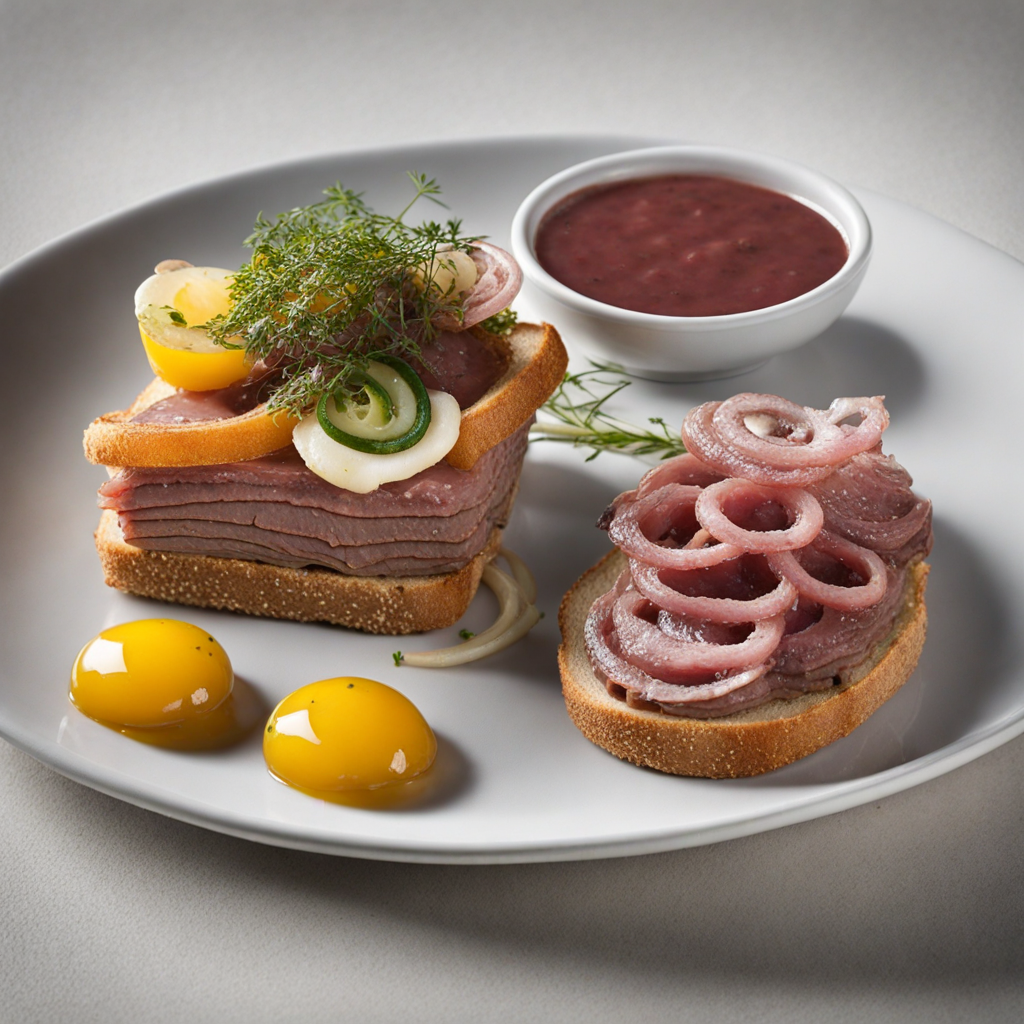Fårikål
Fårikål is a traditional Danish dish that beautifully showcases the simplicity and heartiness of Nordic cuisine. This comforting meal primarily consists of lamb and cabbage, with the key ingredients simmered together for hours to develop a rich, savory flavor. The lamb, often cut into generous chunks, is typically seasoned with whole black peppercorns and layered with wedges of green cabbage, creating a warm and wholesome dish that embodies the essence of Danish cooking. The slow-cooking process allows the flavors to meld together, resulting in tender meat and soft, flavorful cabbage, making it a perfect meal for chilly days.
How It Became This Dish
Fårikål: A Culinary Heritage of Denmark #### Origins Fårikål, a traditional dish emblematic of both Danish and Norwegian cuisine, translates literally to "mutton in cabbage." This rustic meal is primarily composed of mutton (or lamb) and cabbage, simmered together with whole peppercorns and salt, often served with boiled potatoes. While the dish is most commonly associated with Norway, it has roots that extend deep into Nordic history, influencing and intertwining with Danish culinary practices. The origins of Fårikål can be traced back to the rural communities of Scandinavia, where the availability of ingredients dictated culinary practices. Mutton was a staple protein source, particularly in the pastoral regions where sheep farming flourished. The use of cabbage, a hardy vegetable that could withstand the harsh Northern European climate, complemented the meat well and provided essential nutrients during the long winters. Historical records suggest that Fårikål has been consumed since at least the 18th century, although variations of stews made from meat and vegetables date back even further. The dish's ascendance in Danish culture is partly attributed to its simplicity and the ease with which it can be prepared, making it a staple in hearty Scandinavian kitchens. #### Cultural Significance Fårikål holds a cherished place in the hearts of the Danish people, often evoking memories of family gatherings and seasonal festivities. The dish is particularly significant during the autumn months, coinciding with the harvest season when fresh cabbage is at its peak. In 1972, Fårikål was officially designated as Norway's national dish, a testament to its cultural importance, and it has also found a place in Danish cuisine. In Denmark, Fårikål is more than just a meal; it is a symbol of comfort and community. Traditionally, it is prepared in large quantities, making it ideal for sharing among family and friends. The communal aspect of dining is deeply ingrained in Danish culture, and dishes like Fårikål foster connections and togetherness, particularly in the colder months when families gather around the warmth of a kitchen. Moreover, Fårikål is often served in tandem with other traditional Danish foods, such as rye bread and a selection of pickled vegetables, enhancing its status as a centerpiece of the Danish dining experience. It is not uncommon for the dish to be paired with locally brewed beer or aquavit, further enriching the culinary tapestry of Danish culture. #### Development Over Time The evolution of Fårikål reflects broader trends in Danish culinary history, including the shifts towards modernity and globalization. In the early 20th century, as urbanization increased and lifestyles became busier, traditional recipes began to adapt. Convenience became key, and while many families still cherished the time-honored methods of slow cooking, there emerged a market for pre-packaged ingredients and quick meal solutions. Despite these changes, many Danes have remained loyal to the traditional preparation of Fårikål. The dish is typically made by layering pieces of mutton with cabbage in a pot, sprinkling salt and peppercorns throughout. The mixture is then covered with water and left to simmer for several hours, allowing the flavors to meld and the meat to become tender. This slow-cooking method is an homage to the past, preserving the essence of the dish while still adapting to contemporary tastes. In recent years, there has been a resurgence of interest in traditional Nordic cuisines, spurred by a global movement toward local and sustainable eating. Chefs and home cooks alike are rediscovering the rich flavors and history behind dishes like Fårikål. This revival has led to innovative interpretations of the classic recipe, with some chefs experimenting with different cuts of meat, incorporating spices, or even introducing modern techniques like sous-vide cooking. The dish has also gained popularity beyond Scandinavia, becoming a seasonal favorite in other parts of Europe and North America. Food festivals celebrating Nordic cuisine have featured Fårikål, showcasing its hearty appeal and drawing attention to its historical roots. As individuals seek comfort in food during uncertain times, the simple and wholesome nature of Fårikål resonates with many, reaffirming its role as a comforting staple. #### Conclusion Fårikål is more than just a dish; it is a narrative woven into the fabric of Danish culture and history. From its humble origins as a peasant meal to its status as a beloved national dish, it encapsulates the spirit of community, tradition, and resilience found in Danish society. The dish has evolved over centuries, adapting to changing times while retaining the essence of its roots. As we continue to explore and celebrate the culinary traditions of Denmark, Fårikål stands as a testament to the enduring power of food to connect people, tell stories, and preserve cultural heritage. Whether enjoyed in a cozy family kitchen or featured on a modern restaurant menu, Fårikål remains a beloved symbol of Danish identity, inviting both locals and visitors alike to partake in its rich history and comforting flavors.
You may like
Discover local flavors from Denmark


